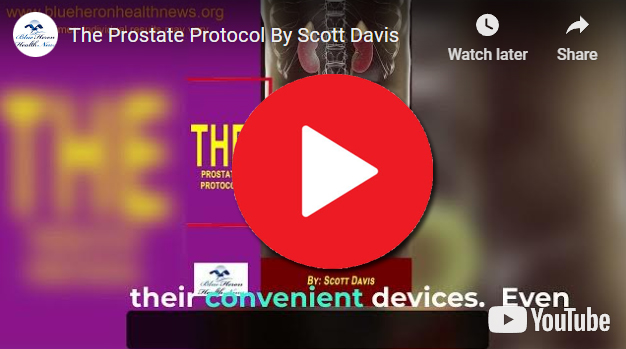
The Prostate Protocol By Scott Davis The Prostate Protocol is designed for all those who want a natural solution for BPH. The online program can help users to treat BPH. Also, it will address the root cause and prevent a recurrence. You might not expect this benefit from conventional treatments. The program is the outcome of extensive research.
What is benign prostatic hyperplasia (BPH)?
Overview of Benign Prostatic Hyperplasia (BPH)
Benign Prostatic Hyperplasia (BPH) is a non-cancerous enlargement of the prostate gland, commonly affecting older men. This condition can significantly impact urinary function and overall quality of life.
Anatomy and Function of the Prostate
The prostate is a small, walnut-shaped gland located below the bladder and in front of the rectum. It surrounds the urethra, the tube that carries urine from the bladder out of the body through the penis. The prostate’s primary function is to produce seminal fluid, which nourishes and transports sperm during ejaculation.
Causes of BPH
BPH is primarily caused by age-related hormonal changes. The exact mechanisms are not fully understood, but several factors contribute to the development of BPH:
- Hormonal Imbalance: As men age, the balance of sex hormones (testosterone and estrogen) changes. Increased levels of dihydrotestosterone (DHT), a metabolite of testosterone, can lead to prostate growth.
- Genetic Factors: A family history of BPH can increase the risk.
- Lifestyle and Health: Obesity, lack of physical activity, and metabolic syndrome may contribute to the development of BPH.
Symptoms of BPH
The enlarged prostate can press against the urethra, causing various urinary symptoms. These symptoms can range from mild to severe and may worsen over time. Common symptoms include:
Urinary Symptoms
- Difficulty Starting Urination: Straining to begin urination.
- Weak Urine Stream: A reduced flow of urine.
- Intermittent Stream: Starting and stopping of the urine stream.
- Frequent Urination: An increased need to urinate, especially at night (nocturia).
- Urgency: A sudden, strong urge to urinate.
- Incomplete Bladder Emptying: Feeling that the bladder is not completely emptied after urination.
- Dribbling: Slow leakage of urine after finishing.
Complications
- Urinary Retention: Inability to urinate, which can require emergency medical attention.
- Urinary Tract Infections (UTIs): Due to incomplete bladder emptying.
- Bladder Stones: Caused by residual urine in the bladder.
- Bladder Damage: Overstretching and weakening of the bladder muscles.
- Kidney Damage: Increased pressure on the kidneys due to urinary retention.
Diagnosis of BPH
To diagnose BPH, a healthcare provider will typically perform a series of evaluations:
- Medical History and Symptom Review: Detailed discussion of symptoms and their impact on daily life.
- Digital Rectal Exam (DRE): Physical examination of the prostate through the rectum to assess its size and condition.
- Prostate-Specific Antigen (PSA) Test: Blood test to measure PSA levels, which can be elevated in BPH but also in prostate cancer.
- Urine Flow Study: Measures the strength and amount of urine flow.
- Postvoid Residual Volume Test: Measures the amount of urine left in the bladder after urination using ultrasound.
- Cystoscopy: A scope inserted through the urethra to visualize the bladder and prostate.
Treatment of BPH
Treatment for BPH depends on the severity of symptoms and their impact on quality of life. Options range from lifestyle modifications and medications to minimally invasive procedures and surgery.
Lifestyle Changes
- Fluid Management: Reducing fluid intake before bedtime and avoiding caffeine and alcohol.
- Bladder Training: Scheduled urination to improve bladder control.
- Physical Activity: Regular exercise can improve overall health and potentially reduce symptoms.
Medications
- Alpha-Blockers: Medications such as tamsulosin, alfuzosin, and doxazosin relax the muscles of the prostate and bladder neck to improve urine flow.
- 5-Alpha Reductase Inhibitors: Drugs like finasteride and dutasteride shrink the prostate by inhibiting the conversion of testosterone to DHT.
- Combination Therapy: Using both alpha-blockers and 5-alpha reductase inhibitors for better symptom control.
- Phosphodiesterase-5 Inhibitors: Medications like tadalafil can help with both BPH and erectile dysfunction.
Minimally Invasive Procedures
- Transurethral Microwave Thermotherapy (TUMT): Uses microwave energy to heat and reduce prostate tissue.
- Transurethral Needle Ablation (TUNA): Uses radiofrequency energy to destroy excess prostate tissue.
- Prostatic Urethral Lift (PUL): Small implants are used to lift and hold the enlarged prostate tissue away from the urethra.
Surgical Options
- Transurethral Resection of the Prostate (TURP): Removal of part of the prostate through the urethra.
- Laser Surgery: Uses laser energy to remove or shrink prostate tissue, such as Holmium Laser Enucleation of the Prostate (HoLEP) and Photoselective Vaporization of the Prostate (PVP).
- Open Prostatectomy: Removal of the prostate gland through an abdominal incision, typically reserved for very large prostates.
Conclusion
Benign Prostatic Hyperplasia (BPH) is a common condition in aging men, characterized by the non-cancerous enlargement of the prostate gland. This enlargement can lead to various urinary symptoms and complications. Diagnosis involves a combination of medical history, physical examination, and diagnostic tests. Treatment options vary based on symptom severity and range from lifestyle modifications and medications to minimally invasive procedures and surgery. Regular check-ups and proactive management are essential for maintaining quality of life and preventing complications associated with BPH.

The Prostate Protocol By Scott Davis The Prostate Protocol is designed for all those who want a natural solution for BPH. The online program can help users to treat BPH. Also, it will address the root cause and prevent a recurrence. You might not expect this benefit from conventional treatments. The program is the outcome of extensive research.